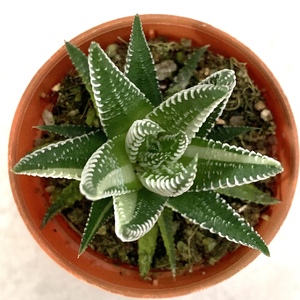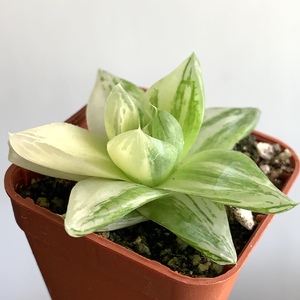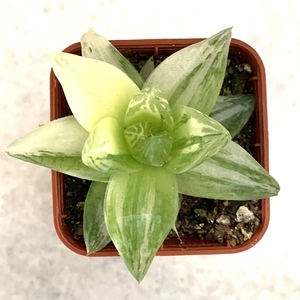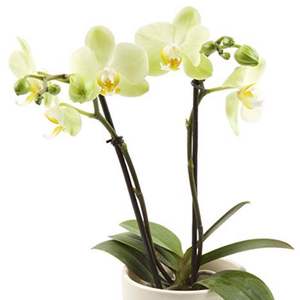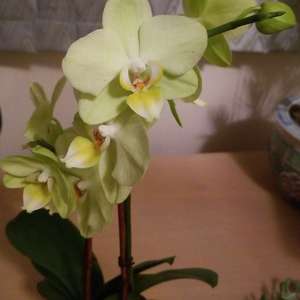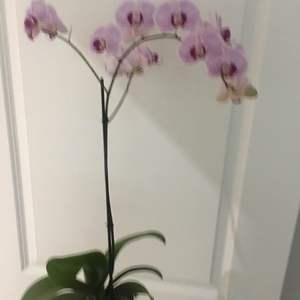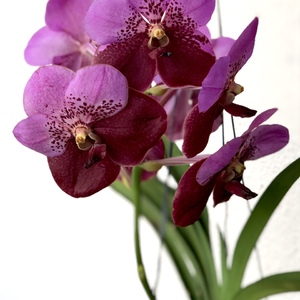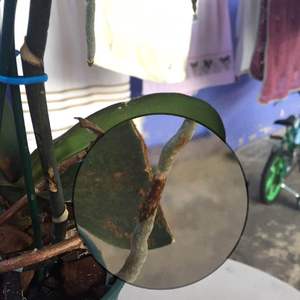文章
Miss Chen
2022年04月17日

Encyclia, a genus of epiphytic orchids, comes from the Greek word enkyklein, which refers to the lip that encircles a column. The Encyclia Orchid (Encyclia cochleata) is also known as a cockleshell, clamshell or cochleata orchid.
There are about 160 species and many natural hybrids of Encyclia Orchids distributed in Florida, Mexico, Central America, South America, and to Argentina.
Plants can be anywhere from two inches long to very large pseudobulbs with leaves two feet long. The bract of the pseudobulb is usually a bright green. Typically, two or three leaves come from the top of the bulb. Longer than wide with a pointed tip, the leaves are thick to hold moisture. The lip, while not connected completely to the column, unfolds from it in a different color than the rest of the flower; it can be ruffled like a Cattleya or flat and broad like an Oncidium.
Encyclia Orchids always seem to be in bloom. They are able to bloom for several months at a time. Clam-shaped flowers have intricate colors and markings. While some horticulturalists believe this type of orchid looks like a clam, others compare it to the shape of an octopus as the petals and sepals dangle freely. Yellowish-green petals hang down and create tentacles of sorts.
Botanical Name Encyclia cochleata
Common Names Encyclia orchid, Cockleshell or cochleata orchid, clamshell orchid
Plant Type Epiphyte
Mature Size Up to two feet tall depending on the variety
Sun Exposure Indirect, medium to bright
Soil Type Well-drained mix such as fir bark, lava rock, river rocks or hardwood charcoal
Soil pH 5.5-6.5
Bloom Time Spring
Flower Color Purple, brown, yellow, green and fuchsia
Hardiness Zones 9, 10, 11
Native Area Damp forests, woodlands and swamps of southern Florida, Mexico, the West Indies, and Central and South America
Encyclia Orchid Care
The care of Encyclia Orchids can vary considerably depending on which species you select. They can be rather particular about the light and water they receive but are such beautiful plants that they are worth the effort.
Light
Place Encyclia Orchids in bright, indirect, filtered light (even brighter than is needed for Cattleya). They will grow under florescent bulbs, but natural light is best.
An east-facing window provides ideal morning sunlight and protects the plant from the hot afternoon sun, which could scorch the leaves. Shade hot afternoon sun from the south with a sheer curtain.
Encyclia, like Epidendrum, can also grow especially well beneath a house screening such as a pool or patio.
Soil
Pot in an exceptionally well-drained potting mix. Coarse fir bark, lava rock, river rocks, hardwood charcoal, bits of broken pottery and chunks of tree fern are all good options that will encourage the roots to be wet and then dry quickly.
Water
To welcome moderate humid air, place the pot atop damp pebbles and mist occasionally with a spray bottle.
Encyclia Orchids are native to damp and warm forests, woodlands and swamps where they can be found growing on tree trunks and branches by absorbing moisture and nutrients from rain, air and water.
South American species require very little water because they retrieve moisture from high humidity. Brazilian species don't need to be watered often either, only if the pseudobulbs shrivel.
For species from Florida and the Caribbean, water every five to seven days in the warm months with tepid water or rainwater. Allow roots to dry between waterings. Water at the most every two weeks when the orchid goes dormant in winter. Begin watering more regularly as new growth appears.
Central American species need a little less water than these species but more than their relatives from South America and Brazil.
Temperature and Humidity
Most orchids are hardy in USDA Zones 9 through 11 where conditions are at least semi-tropical.
Maintain a warm, but not hot, daytime temperature of about 85 degrees Fahrenheit. At night, open the window nearby and move the orchid to a place that is closer to 70 degrees. Such cooler temperatures will encourage the orchid to bloom.
Fertilizer
Fertilizer should be the same as the potting medium. Use 20-20-20 with tree fern or charcoal. Use 30-10-10 with fir bark. Feed the plant non-urea based fertilizer at half strength weekly, when the soil is moist in the warm months. Fertilize once a month or less in winter.
Propagating Encyclia Orchids
Divide into parts of four pseudobulbs or stems. Remove dead roots and set divisions aside. A week later, new root growth will likely emerge. Repot the new plants and place in slightly lower light for a few weeks.
Are Encyclia Orchids Toxic?
According to the ASPCA, the Florida Butterfly Orchid (E. tampensis) is non-toxic to cats, dogs and horses.

Encyclia Orchid Varieties
Just a few of the many varieties of this orchid type include:
Encyclia cordigeravar. rosea 'Dragon's Mouth': creates a rosy fuschia bloom from a maroon base.
E. tampense 'Florida Butterfly Orchid': delicately accented by pink and white.
E. randii 'La Selva': has petals that are brown, white and pink emerging from a green center.
E. alata 'Sunset Valley Orchids': comes in a rustic brown and green topped with cool white dotted by subtle stripes.
Potting and Repotting
Neither Epidendrum nor Encyclia Orchids like being disturbed, so avoid repotting unless necessary. If needed, repot after flowering has stopped. Soak in warm water for 10 minutes to reduce the risk of root damage.
Pot in a clay container, or if the humidity is high the orchid may also thrive in a wooden basket to allow for airflow over the roots and minimize overwatering issues. Plastic is okay too, though water evaporates slower in clay.
There are about 160 species and many natural hybrids of Encyclia Orchids distributed in Florida, Mexico, Central America, South America, and to Argentina.
Plants can be anywhere from two inches long to very large pseudobulbs with leaves two feet long. The bract of the pseudobulb is usually a bright green. Typically, two or three leaves come from the top of the bulb. Longer than wide with a pointed tip, the leaves are thick to hold moisture. The lip, while not connected completely to the column, unfolds from it in a different color than the rest of the flower; it can be ruffled like a Cattleya or flat and broad like an Oncidium.
Encyclia Orchids always seem to be in bloom. They are able to bloom for several months at a time. Clam-shaped flowers have intricate colors and markings. While some horticulturalists believe this type of orchid looks like a clam, others compare it to the shape of an octopus as the petals and sepals dangle freely. Yellowish-green petals hang down and create tentacles of sorts.
Botanical Name Encyclia cochleata
Common Names Encyclia orchid, Cockleshell or cochleata orchid, clamshell orchid
Plant Type Epiphyte
Mature Size Up to two feet tall depending on the variety
Sun Exposure Indirect, medium to bright
Soil Type Well-drained mix such as fir bark, lava rock, river rocks or hardwood charcoal
Soil pH 5.5-6.5
Bloom Time Spring
Flower Color Purple, brown, yellow, green and fuchsia
Hardiness Zones 9, 10, 11
Native Area Damp forests, woodlands and swamps of southern Florida, Mexico, the West Indies, and Central and South America
Encyclia Orchid Care
The care of Encyclia Orchids can vary considerably depending on which species you select. They can be rather particular about the light and water they receive but are such beautiful plants that they are worth the effort.
Light
Place Encyclia Orchids in bright, indirect, filtered light (even brighter than is needed for Cattleya). They will grow under florescent bulbs, but natural light is best.
An east-facing window provides ideal morning sunlight and protects the plant from the hot afternoon sun, which could scorch the leaves. Shade hot afternoon sun from the south with a sheer curtain.
Encyclia, like Epidendrum, can also grow especially well beneath a house screening such as a pool or patio.
Soil
Pot in an exceptionally well-drained potting mix. Coarse fir bark, lava rock, river rocks, hardwood charcoal, bits of broken pottery and chunks of tree fern are all good options that will encourage the roots to be wet and then dry quickly.
Water
To welcome moderate humid air, place the pot atop damp pebbles and mist occasionally with a spray bottle.
Encyclia Orchids are native to damp and warm forests, woodlands and swamps where they can be found growing on tree trunks and branches by absorbing moisture and nutrients from rain, air and water.
South American species require very little water because they retrieve moisture from high humidity. Brazilian species don't need to be watered often either, only if the pseudobulbs shrivel.
For species from Florida and the Caribbean, water every five to seven days in the warm months with tepid water or rainwater. Allow roots to dry between waterings. Water at the most every two weeks when the orchid goes dormant in winter. Begin watering more regularly as new growth appears.
Central American species need a little less water than these species but more than their relatives from South America and Brazil.
Temperature and Humidity
Most orchids are hardy in USDA Zones 9 through 11 where conditions are at least semi-tropical.
Maintain a warm, but not hot, daytime temperature of about 85 degrees Fahrenheit. At night, open the window nearby and move the orchid to a place that is closer to 70 degrees. Such cooler temperatures will encourage the orchid to bloom.
Fertilizer
Fertilizer should be the same as the potting medium. Use 20-20-20 with tree fern or charcoal. Use 30-10-10 with fir bark. Feed the plant non-urea based fertilizer at half strength weekly, when the soil is moist in the warm months. Fertilize once a month or less in winter.
Propagating Encyclia Orchids
Divide into parts of four pseudobulbs or stems. Remove dead roots and set divisions aside. A week later, new root growth will likely emerge. Repot the new plants and place in slightly lower light for a few weeks.
Are Encyclia Orchids Toxic?
According to the ASPCA, the Florida Butterfly Orchid (E. tampensis) is non-toxic to cats, dogs and horses.

Encyclia Orchid Varieties
Just a few of the many varieties of this orchid type include:
Encyclia cordigeravar. rosea 'Dragon's Mouth': creates a rosy fuschia bloom from a maroon base.
E. tampense 'Florida Butterfly Orchid': delicately accented by pink and white.
E. randii 'La Selva': has petals that are brown, white and pink emerging from a green center.
E. alata 'Sunset Valley Orchids': comes in a rustic brown and green topped with cool white dotted by subtle stripes.
Potting and Repotting
Neither Epidendrum nor Encyclia Orchids like being disturbed, so avoid repotting unless necessary. If needed, repot after flowering has stopped. Soak in warm water for 10 minutes to reduce the risk of root damage.
Pot in a clay container, or if the humidity is high the orchid may also thrive in a wooden basket to allow for airflow over the roots and minimize overwatering issues. Plastic is okay too, though water evaporates slower in clay.
0
0
文章
Miss Chen
2021年12月21日

Move over common moth orchids (Phalaenopsis) - it’s time for the Psychopsis orchids to shine! These hardy, unique-looking orchids are the perfect addition to any home or orchid collection. The striking appearance of the Psychopsis flowers led to its common nickname - the “butterfly orchid” as they closely resemble large brightly-colored butterflies. The flowers have long, thin petals that look like antennas and brightly colored sepals that resemble butterfly wings.
In fact, Psychopsis orchids evolved to trick insects into pollinating them through pseudocopulation, meaning that male insects attempt to mate with the flowers thinking they are female insects of the same species. During this process, the flowers are inadvertently pollinated. This deception is used by many other orchid (Orchidaceae) species as well including the fly orchid (Ophrys insectifera) and the bee orchid (Ophrys apifera).

Botanical Name Psychopsis
Common Name Psychopsis orchid, butterfly orchid
Plant Type Orchid
Mature Size 12-16" tall
Sun Exposure Bright, indirect light
Soil Type Sphagnum moss, bark mix
Soil pH 5.5 - 6.5
Bloom Time Varies
Flower Color Yellow, orange, pink, red.
Native Area Central America, Southern America
How to Grow Psychopsis Orchids
Psychopsis is a unique genus of sympodial orchids native to the wet rainforests and upland forest habitats of Central and South America. In their native habitat, Psychopsis orchids are epiphytic - meaning they grow on the surface of plants and trees and derive most of their nutrients and moisture from the air around them. However, Psychopsis orchids are well-adapted to indoor growing as well and are generally considered to be a hardy genus of orchids.
When grown in the right conditions, Psychopsis orchids can flower at regular intervals throughout the entire year. Mature and healthy Psychopsis can have several inflorescences with more than one flower per inflorescence. In fact, they can flower continuously on the same inflorescence for up to 10 years! So once the flowers on your Psychopsis fall off, be sure not to remove the inflorescence until it falls off naturally. Unlike some other orchid species, Psychopsis orchids do not require a well-defined rest period to stimulate flowering.
Light
Choose a location that receives bright, indirect light for your Psychopsis orchid. Psychopsis orchids can tolerate direct morning and/or evening sun but must be shielded from the intense midday sun.
Too much light can result in smaller, paler flowers while conditions that are too shady will result in fewer flowers (or no flowers at all) that are small and brightly colored. Ideally, Psychopsis orchids should receive at least 10 hours of daylight, which may require grow lights to achieve depending on your location and the time of year.
Soil
Since Psychopsis orchids grow as epiphytes in their natural habitat, they typically do best when grown in soilless potting mediums. Sphagnum moss or a mixture of bark and organic matter are popular choices for Psychopsis orchids.
Ensuring that the roots receive adequate airflow is important, so keep this in mind when choosing a potting medium for your Psychopsis orchid. Alternatively, if you want to take the guesswork out of choosing an appropriate potting mix, many greenhouses and nurseries offer pre-made orchid potting mixes.

Water
Like most orchids, Psychopsis orchids thrive in moist conditions and appreciate frequent and abundant waterings. However, they should be allowed to nearly dry out between waterings and should never remain waterlogged. Do not allow stagnant water to sit around the delicate roots of the Psychopsis orchid - during watering excess water should flow freely from the bottom of the pot. Psychopsis orchids also benefit from having their potting medium regularly flushed out with pure, filtered water to ensure that the delicate roots are not burned by any salt present in unfiltered water.
Temperature and Humidity
Psychopsis orchids are native to the humid regions of South America and Central America, and as such, they require consistent humidity in order to thrive, and especially to bloom. Additionally, Psychopsis orchids require adequate air movement, as they do not tolerate stale conditions well.
In terms of temperatures, Psychopsis orchids grow well indoors as they require consistently warm temperatures. Temperatures should be kept above 60 degrees Fahrenheit during the evenings, and up to 90 degrees Fahrenheit during the day.
Fertilizer
Fertilizing Psychopsis orchids on a regular basis will help them to grow well and flower consistently. Experienced orchid growers use the “weekly, weakly” rule of thumb when it comes to feeding orchids which states that adding diluted fertilizer into regular waterings is better than feeding a full dose once a month. Apply a balanced fertilizer diluted to half or a quarter strength once per week for the best results.
In fact, Psychopsis orchids evolved to trick insects into pollinating them through pseudocopulation, meaning that male insects attempt to mate with the flowers thinking they are female insects of the same species. During this process, the flowers are inadvertently pollinated. This deception is used by many other orchid (Orchidaceae) species as well including the fly orchid (Ophrys insectifera) and the bee orchid (Ophrys apifera).

Botanical Name Psychopsis
Common Name Psychopsis orchid, butterfly orchid
Plant Type Orchid
Mature Size 12-16" tall
Sun Exposure Bright, indirect light
Soil Type Sphagnum moss, bark mix
Soil pH 5.5 - 6.5
Bloom Time Varies
Flower Color Yellow, orange, pink, red.
Native Area Central America, Southern America
How to Grow Psychopsis Orchids
Psychopsis is a unique genus of sympodial orchids native to the wet rainforests and upland forest habitats of Central and South America. In their native habitat, Psychopsis orchids are epiphytic - meaning they grow on the surface of plants and trees and derive most of their nutrients and moisture from the air around them. However, Psychopsis orchids are well-adapted to indoor growing as well and are generally considered to be a hardy genus of orchids.
When grown in the right conditions, Psychopsis orchids can flower at regular intervals throughout the entire year. Mature and healthy Psychopsis can have several inflorescences with more than one flower per inflorescence. In fact, they can flower continuously on the same inflorescence for up to 10 years! So once the flowers on your Psychopsis fall off, be sure not to remove the inflorescence until it falls off naturally. Unlike some other orchid species, Psychopsis orchids do not require a well-defined rest period to stimulate flowering.
Light
Choose a location that receives bright, indirect light for your Psychopsis orchid. Psychopsis orchids can tolerate direct morning and/or evening sun but must be shielded from the intense midday sun.
Too much light can result in smaller, paler flowers while conditions that are too shady will result in fewer flowers (or no flowers at all) that are small and brightly colored. Ideally, Psychopsis orchids should receive at least 10 hours of daylight, which may require grow lights to achieve depending on your location and the time of year.
Soil
Since Psychopsis orchids grow as epiphytes in their natural habitat, they typically do best when grown in soilless potting mediums. Sphagnum moss or a mixture of bark and organic matter are popular choices for Psychopsis orchids.
Ensuring that the roots receive adequate airflow is important, so keep this in mind when choosing a potting medium for your Psychopsis orchid. Alternatively, if you want to take the guesswork out of choosing an appropriate potting mix, many greenhouses and nurseries offer pre-made orchid potting mixes.

Water
Like most orchids, Psychopsis orchids thrive in moist conditions and appreciate frequent and abundant waterings. However, they should be allowed to nearly dry out between waterings and should never remain waterlogged. Do not allow stagnant water to sit around the delicate roots of the Psychopsis orchid - during watering excess water should flow freely from the bottom of the pot. Psychopsis orchids also benefit from having their potting medium regularly flushed out with pure, filtered water to ensure that the delicate roots are not burned by any salt present in unfiltered water.
Temperature and Humidity
Psychopsis orchids are native to the humid regions of South America and Central America, and as such, they require consistent humidity in order to thrive, and especially to bloom. Additionally, Psychopsis orchids require adequate air movement, as they do not tolerate stale conditions well.
In terms of temperatures, Psychopsis orchids grow well indoors as they require consistently warm temperatures. Temperatures should be kept above 60 degrees Fahrenheit during the evenings, and up to 90 degrees Fahrenheit during the day.
Fertilizer
Fertilizing Psychopsis orchids on a regular basis will help them to grow well and flower consistently. Experienced orchid growers use the “weekly, weakly” rule of thumb when it comes to feeding orchids which states that adding diluted fertilizer into regular waterings is better than feeding a full dose once a month. Apply a balanced fertilizer diluted to half or a quarter strength once per week for the best results.
0
0
文章
Miss Chen
2018年06月30日

Has your four-year-old ever looked at you begrudgingly over a plate of veggies, and said, “I wish there was an ice cream plant.”? Well, move over parsnips and eggplant, because with some orchid-growing know-how, you can cultivate one of the most aromatic and intoxicating spices on earth for ice cream, coffee drinks, and desserts.

The vanilla orchid is not an easy plant to grow for beginners. Some previous success with orchid growing is beneficial. A greenhouse is also highly desirable, especially for gardeners who don't live in a frost-free climate.
An Ancient Delicacy
How lucky were the ancient Aztec people of Mexico? Not only were they the first to discover the delights of cocoa, they also were the first to harvest the only edible produced by the family Orchidaceae. It's amazing that the secrets of the pods from the genus Vanilla planifolia were ever discovered, as the fresh pods bear no flavor. Only a careful process of steaming and fermentation release the perfumed essence contained within the seeds.
Like many orchids, the vanilla bean orchid is an epiphyte, and lives on a host tree without drawing nutrients from it. The vine clambers up to the treetops in a zigzag fashion, exhibiting long succulent lance-shaped leaves. Each blooming branch will bear one to two dozen creamy blooms, for a total of several hundred flowers on a mature vine.
Put Your Greenhouse to Use
The vanilla orchid, like most orchids, grows best in bright filtered shade and high humidity. Think of the native jungle habitat of the vanilla orchid; you must replicate this as well as possible using a combination of temperature controls and pampering mists and irrigation. Ideal temperatures are between 60-70 degrees F at night, and 80-95 degrees F during the day. The plants are not frost tolerant, which means those who don't live in a tropical climate must use a greenhouse to rear the plants.
In its native habitat, a mature vanilla orchid vine can grow to 300 feet or greater. However, you can keep your vine to a manageable 20 to 30 feet in greenhouse conditions. Training the vine laterally instead of straight up allows you to get more vine in a smaller space.
Planting the Vanilla Orchid
Start your vanilla orchid in a mixture of half bark and half potting mix. This is slightly more dense and heavy than most orchid growing media. Your cutting or small starter plant will need this combination of excellent drainage and nutrients to nourish the plant while the vine develops. After the vine develops its epiphytic roots, it will no longer depend on the roots in the potting mix. Patience is a requirement for those who wish to harvest vanilla pods, as the plants take anywhere from three to five years from cuttings to flower production.

Vanilla Plant Care
Wherever you grow your vanilla orchid, you must provide this large vine with a sturdy support. In tropical climates, a large tree makes an ideal support. If you grow your vine in a conservatory or greenhouse, a solid wood trellis can support the plant. Don’t bother with fancy latticework; a simple lumber structure is stronger and will soon be obscured by the vine.
Fertilize your vanilla orchid every two weeks during the spring and summer with an orchid fertilizer. Mist your plant regularly and make every effort to keep an 80% humidity level.
Hand-pollinate the flowers in the late morning with a chopstick. Remove pollen from the stamen of one flower and place it on the stigma of another flower. If you are able to allow pollinating insects access to your greenhouse, your chances of a successful pollination may increase. Flowers that have pollinated will wither on the vine rather than falling off within a day. Small green pods will form within a week, eventually elongating into six-inch pods, and are ready to harvest in 9-10 months.
Harvesting Your Vanilla Pods
If pollination is successful, your three-year-old vanilla orchid will produce green bean-like pods from October through March. Good quality pods should be at least six inches long. The curing process is labor-intensive, and involves sweating and drying, which contributes to the premium price of vanilla beans sold in markets. Every day for six weeks, you must wrap the beans in a blanket at night to facilitate moisture condensation on the pods. During the day, place the beans on trays in the sun, or under a heat lamp indoors. Following this sweating process, you should dry the now brown and shriveled pods in a dark, dry place for an additional three months. You can store the cured beans in an air tight container indefinitely.

The vanilla orchid is not an easy plant to grow for beginners. Some previous success with orchid growing is beneficial. A greenhouse is also highly desirable, especially for gardeners who don't live in a frost-free climate.
An Ancient Delicacy
How lucky were the ancient Aztec people of Mexico? Not only were they the first to discover the delights of cocoa, they also were the first to harvest the only edible produced by the family Orchidaceae. It's amazing that the secrets of the pods from the genus Vanilla planifolia were ever discovered, as the fresh pods bear no flavor. Only a careful process of steaming and fermentation release the perfumed essence contained within the seeds.
Like many orchids, the vanilla bean orchid is an epiphyte, and lives on a host tree without drawing nutrients from it. The vine clambers up to the treetops in a zigzag fashion, exhibiting long succulent lance-shaped leaves. Each blooming branch will bear one to two dozen creamy blooms, for a total of several hundred flowers on a mature vine.
Put Your Greenhouse to Use
The vanilla orchid, like most orchids, grows best in bright filtered shade and high humidity. Think of the native jungle habitat of the vanilla orchid; you must replicate this as well as possible using a combination of temperature controls and pampering mists and irrigation. Ideal temperatures are between 60-70 degrees F at night, and 80-95 degrees F during the day. The plants are not frost tolerant, which means those who don't live in a tropical climate must use a greenhouse to rear the plants.
In its native habitat, a mature vanilla orchid vine can grow to 300 feet or greater. However, you can keep your vine to a manageable 20 to 30 feet in greenhouse conditions. Training the vine laterally instead of straight up allows you to get more vine in a smaller space.
Planting the Vanilla Orchid
Start your vanilla orchid in a mixture of half bark and half potting mix. This is slightly more dense and heavy than most orchid growing media. Your cutting or small starter plant will need this combination of excellent drainage and nutrients to nourish the plant while the vine develops. After the vine develops its epiphytic roots, it will no longer depend on the roots in the potting mix. Patience is a requirement for those who wish to harvest vanilla pods, as the plants take anywhere from three to five years from cuttings to flower production.

Vanilla Plant Care
Wherever you grow your vanilla orchid, you must provide this large vine with a sturdy support. In tropical climates, a large tree makes an ideal support. If you grow your vine in a conservatory or greenhouse, a solid wood trellis can support the plant. Don’t bother with fancy latticework; a simple lumber structure is stronger and will soon be obscured by the vine.
Fertilize your vanilla orchid every two weeks during the spring and summer with an orchid fertilizer. Mist your plant regularly and make every effort to keep an 80% humidity level.
Hand-pollinate the flowers in the late morning with a chopstick. Remove pollen from the stamen of one flower and place it on the stigma of another flower. If you are able to allow pollinating insects access to your greenhouse, your chances of a successful pollination may increase. Flowers that have pollinated will wither on the vine rather than falling off within a day. Small green pods will form within a week, eventually elongating into six-inch pods, and are ready to harvest in 9-10 months.
Harvesting Your Vanilla Pods
If pollination is successful, your three-year-old vanilla orchid will produce green bean-like pods from October through March. Good quality pods should be at least six inches long. The curing process is labor-intensive, and involves sweating and drying, which contributes to the premium price of vanilla beans sold in markets. Every day for six weeks, you must wrap the beans in a blanket at night to facilitate moisture condensation on the pods. During the day, place the beans on trays in the sun, or under a heat lamp indoors. Following this sweating process, you should dry the now brown and shriveled pods in a dark, dry place for an additional three months. You can store the cured beans in an air tight container indefinitely.
0
0
求助
kensong
2018年05月31日

Okay, this is my first Phalenopsis (moth orchid). This is about 2 weeks after I cut off its flower stalks after they dropped. Then I repotted. Is this a new leaf I see? Why is it brown red?


0
0
Fion:Because this is new leaf, not all new leaves of plants are tender green.
sunnyzou:do not worry. New leaves are usually like this.
文章
Miss Chen
2018年05月13日

Description: This small perennial orchid produces a low rosette of evergreen basal leaves. Individual leaves are 1½-2½" long and ¾-1½" across; they are ovate or broadly elliptic and smooth along their margins. There are 5-7 primary veins per leaf; they are parallel. These veins are interconnected through a network of secondary veins. Both the primary and secondary veins are accented in white, while the remaining leaf surface is dark green. The basal leaves taper abruptly to petiole-like bases that are short and winged, where they are also accented in white along their central veins. After several years, a spike-like raceme of flowers develops from the basal rosette that is 4-14" tall and more or less erect. The central stalk of this inflorescence is light green, glandular-pubescent, and terete. Along the lower two-thirds of its length, there are widely separated leafy bracts. These bracts are small in size (about ½" in length), linear-lanceolate in shape, and ascending to erect. Along the upper one-third of the central stalk, the small flowers are densely distributed, facing in all directions.
The sepals and petals of these flowers (3 of each per flower) are white or greenish white, while their inferior ovaries are green and glandular-pubescent. The upper sepal and 2 lateral petals of each flower are merged together to form a hood with a slightly upturned outer rim, while the 2 lateral sepals are free and the lower petal forms an open pouch with a minute down-turned beak. These petals and sepals are 3.5-5.5 mm. long; the outer surfaces of the hood and lateral sepals are minutely pubescent. The ovaries are 6-8 mm. long, ellipsoid in shape, and ascending. At the bases of the ovaries, there are ascending floral bracts. These bracts are green, glandular-pubescent, linear-lanceolate in shape, and ascending; they are about the same length as the ovaries. The blooming period occurs during mid- to late summer, lasting about 3-4 weeks. There is no noticeable floral fragrance. Afterwards, the flowers are replaced by seed capsules that become ovoid in shape and brown at maturity. At this time, these capsules split open into several sections to release their minute seeds to the wind. The root system consists of a shallow creeping rhizome with coarse fibrous roots. After flowering, this rhizome forms 1-3 clonal offsets. The clonal offsets become independent on their rhizomes, while the original rhizome dies. The evergreen basal leaves persist for at least 1½ years (at least 2 summers and 1 winter).

Cultivation: The preference is medium shade to dappled sunlight, mesic to dry-mesic conditions, and an acidic loose soil that contains loam, loess (wind-blown silt from a prior ice age), or glacial till with decaying organic matter. The site should be protected from drying winds and it should be relatively humid. The root system of this orchid benefits from an endomycorrhizal association with certain kinds of fungi. This orchid has been successfully cultivated indoors in terrariums (Ugiansky, 2010). It should not be collected from the wild, which can easily destroy local populations.
Range & Habitat: The native Downy Rattlesnake-Plantain is uncommon in Illinois, occurring mostly in northern and southern Illinois (see Distribution Map). Habitats include upland woodlands, north-facing wooded slopes, bluffs, large wooded ravines or sandstone canyons, sandstone glades, and woodlands damaged by logging. On rare occasions, this orchid has also been found in forested bogs. It is often associated with such canopy trees as oaks, pines, Eastern Hemlock (Tsuga canadensis), or sugar maple (Acer saccharum). This orchid usually occurs in high Faunal Associations: The small flowers are cross-pollinated by bees, including bumblebees (Bombus spp.) and green metallic bees (e.g., Augochlora spp., Augochlorella spp.); see ILPIN and Homoya (1993) for more information. Aside from this, little is known about floral-faunal relationships for this orchid. The evergreen leaves may be browsed by deer and the rhizomes may be eaten by chipmunks or mice, but additional study of such potential threats is required.
Photographic Location: A rocky bluff dominated by Eastern Hemlock (Tsuga canadensis) at a nature preserve in east-central Indiana.
Comments: While the flowers of Downy Rattlesnake-Plantain are rather small, the reticulated patterns of its basal leaves are very ornate and unique, making this orchid easy to identity. In spite of its common name, this orchid is not closely-related to plantains (Plantago spp.); its leaves have a shape that is similar to some of the common broad-leaved plantains. The common name is also inspired by the superficial resemblance of the leaves' reticulated patterns to the skin of a rattlesnake. The inflorescence of Downy Rattlesnake-Plantain resembles those of the Lady Tresses' Orchids (Spiranthes spp.), although they have dissimilar leaves. The flowers of the former orchid differ from those of the latter by the pouch-like structure of their lower lips, which is lacking in the flowers of Lady Tresses' Orchids. There are other orchid species in the Goodyera genus, but their ranges are located outside of Illinois, mostly to the north or northeast.
The sepals and petals of these flowers (3 of each per flower) are white or greenish white, while their inferior ovaries are green and glandular-pubescent. The upper sepal and 2 lateral petals of each flower are merged together to form a hood with a slightly upturned outer rim, while the 2 lateral sepals are free and the lower petal forms an open pouch with a minute down-turned beak. These petals and sepals are 3.5-5.5 mm. long; the outer surfaces of the hood and lateral sepals are minutely pubescent. The ovaries are 6-8 mm. long, ellipsoid in shape, and ascending. At the bases of the ovaries, there are ascending floral bracts. These bracts are green, glandular-pubescent, linear-lanceolate in shape, and ascending; they are about the same length as the ovaries. The blooming period occurs during mid- to late summer, lasting about 3-4 weeks. There is no noticeable floral fragrance. Afterwards, the flowers are replaced by seed capsules that become ovoid in shape and brown at maturity. At this time, these capsules split open into several sections to release their minute seeds to the wind. The root system consists of a shallow creeping rhizome with coarse fibrous roots. After flowering, this rhizome forms 1-3 clonal offsets. The clonal offsets become independent on their rhizomes, while the original rhizome dies. The evergreen basal leaves persist for at least 1½ years (at least 2 summers and 1 winter).

Cultivation: The preference is medium shade to dappled sunlight, mesic to dry-mesic conditions, and an acidic loose soil that contains loam, loess (wind-blown silt from a prior ice age), or glacial till with decaying organic matter. The site should be protected from drying winds and it should be relatively humid. The root system of this orchid benefits from an endomycorrhizal association with certain kinds of fungi. This orchid has been successfully cultivated indoors in terrariums (Ugiansky, 2010). It should not be collected from the wild, which can easily destroy local populations.
Range & Habitat: The native Downy Rattlesnake-Plantain is uncommon in Illinois, occurring mostly in northern and southern Illinois (see Distribution Map). Habitats include upland woodlands, north-facing wooded slopes, bluffs, large wooded ravines or sandstone canyons, sandstone glades, and woodlands damaged by logging. On rare occasions, this orchid has also been found in forested bogs. It is often associated with such canopy trees as oaks, pines, Eastern Hemlock (Tsuga canadensis), or sugar maple (Acer saccharum). This orchid usually occurs in high Faunal Associations: The small flowers are cross-pollinated by bees, including bumblebees (Bombus spp.) and green metallic bees (e.g., Augochlora spp., Augochlorella spp.); see ILPIN and Homoya (1993) for more information. Aside from this, little is known about floral-faunal relationships for this orchid. The evergreen leaves may be browsed by deer and the rhizomes may be eaten by chipmunks or mice, but additional study of such potential threats is required.
Photographic Location: A rocky bluff dominated by Eastern Hemlock (Tsuga canadensis) at a nature preserve in east-central Indiana.
Comments: While the flowers of Downy Rattlesnake-Plantain are rather small, the reticulated patterns of its basal leaves are very ornate and unique, making this orchid easy to identity. In spite of its common name, this orchid is not closely-related to plantains (Plantago spp.); its leaves have a shape that is similar to some of the common broad-leaved plantains. The common name is also inspired by the superficial resemblance of the leaves' reticulated patterns to the skin of a rattlesnake. The inflorescence of Downy Rattlesnake-Plantain resembles those of the Lady Tresses' Orchids (Spiranthes spp.), although they have dissimilar leaves. The flowers of the former orchid differ from those of the latter by the pouch-like structure of their lower lips, which is lacking in the flowers of Lady Tresses' Orchids. There are other orchid species in the Goodyera genus, but their ranges are located outside of Illinois, mostly to the north or northeast.
0
0



